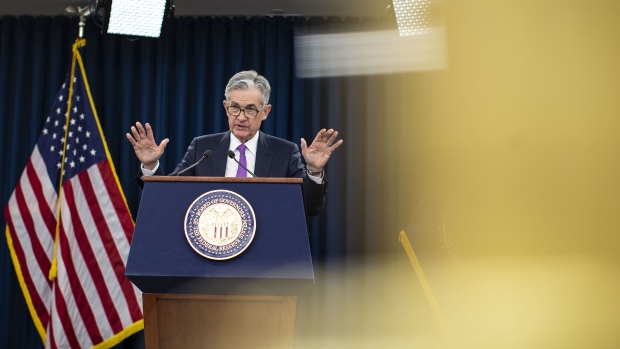Feb 20, 2019
Fed eyes ending asset runoff in 2019 amid clouded rate path
, Bloomberg News

Federal Reserve officials widely favored ending the runoff of the central bank’s balance sheet this year while expressing uncertainty over whether they would raise interest rates again in 2019, minutes of their January meeting showed.
“Almost all participants thought that it would be desirable to announce before too long a plan to stop reducing the Federal Reserve’s asset holdings later this year,” according to the record of the Federal Open Market Committee’s Jan. 29-30 gathering released Wednesday.
“Such an announcement would provide more certainty about the process for completing the normalization of the size of the Federal Reserve’s balance sheet,” the minutes said, referring to the rolloff of assets from the balance sheet that began in late 2017. Launched as an emergency measure to protect the economy during the financial crisis, it has declined to about US$4 trillion from a peak of US$4.5 trillion in 2015.
“They will have a permanently gigantic balance sheet,” said Ward McCarthy, chief financial economist at Jefferies LLC. “They always said it would be larger than precrisis, but earlier commentary suggested it would something significantly smaller.”
The minutes also elaborated on the dovish message delivered three weeks ago when the FOMC said it will be “patient,” signaling it had put rate hikes on hold and was prepared to be more flexible on shrinking the balance sheet. The shift occurred after the worst December for U.S. stocks since the Great Depression, trade tensions escalated between the U.S. and China, and President Donald Trump berated officials for tightening monetary policy too much.
“Many participants observed that if uncertainty abated, the Committee would need to reassess the characterization of monetary policy as ‘patient’ and might then use different statement language,” the minutes noted.
Market Reaction
After the minutes were released, U.S. stocks rose and the 10-year Treasury yield extended gains. Federal funds futures were little changed with just 3 basis points of cuts priced into the December 2019 meeting.
Shedding additional light on the central bank’s pivot away from projecting gradual interest-rate hikes, the minutes said that “many participants suggested that it was not yet clear what adjustments to the target range for the federal funds rate may be appropriate later this year.”
While several said rate hikes might be necessary “only if inflation outcomes were higher than in their baseline outlook,” several others said that if the economy evolved as expected, higher rates would be appropriate later this year, according to the minutes.
Chairman Jerome Powell underscored the message in his Jan. 30 press conference by saying the Fed would be patient in deciding when and how to adjust policy in the face of a mounting set of risks, including slowing growth in China and Europe, Brexit, trade negotiations and the effects of the five-week U.S. government shutdown. The FOMC unanimously decided to leave the benchmark interest rate unchanged in a range of 2.25 per cent to 2.5 per cent.
While officials continued to expect a sustained expansion, strong labor markets and inflation near their 2 per cent target, adopting a “patient and flexible approach was appropriate at this time as a way to manage risks while assessing incoming information,” the minutes said.
“The minutes confirm something we already heard some Fed speakers say: they’re now convinced the downside risks outnumber the upside risks,” said Diane Swonk, chief economist at Grant Thornton LLP. “They’re clearly in risk management mode.”
Still, Swonk said it was important to note the Fed minutes didn’t reveal any committee members raising the possibility that the Fed’s next move might be a rate cut. “There’s enough downside in the minutes that if we did see that articulated, it would have risked conveying the wrong message,” she said.